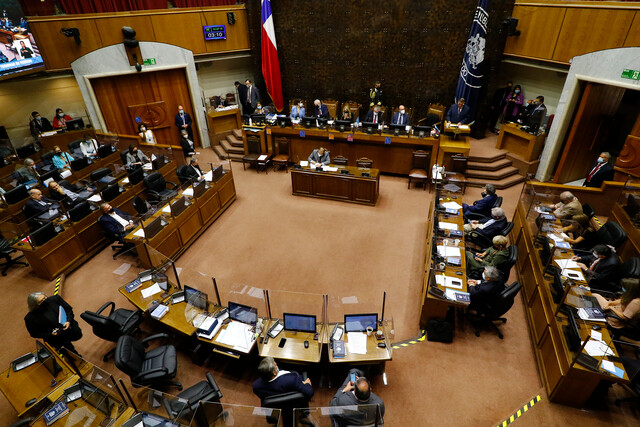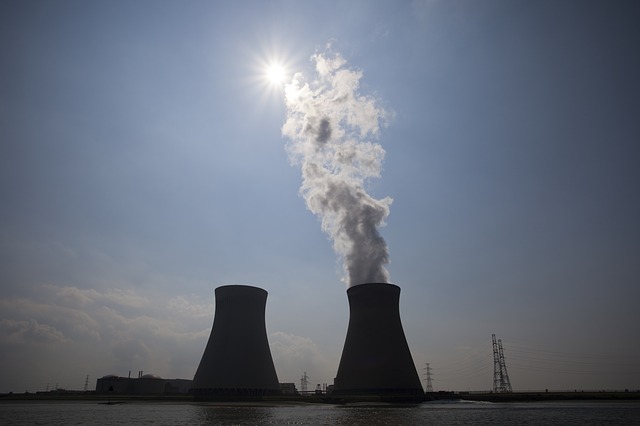On June 13, 2022, Chile published its Climate Change Framework Law (“the Climate Act”). The Climate Act includes a binding goal of net zero emissions by 2050 at the latest, following the recommendations of the IPCC. It creates regulatory instruments, a new crosscutting governance, and opportunities for public participation. The Climate Act also creates important challenges and opportunities for Chile’s private sector. This blog explores these elements and how they imply a paradigm shift in Chilean climate governance, becoming a leader in Latin America for climate action.
The Process

According to the criteria established by the UNFCCC, Chile is highly vulnerable to the effects of climate change. The country meets seven of the nine criteria, including an extensive low-lying coastline, areas prone to natural disasters, areas susceptible to drought and desertification, and urban areas with high air pollution.
In 2019, Chile became President of the 25th United Nations Climate Change Conference (COP25). Momentum created by this event created the perfect conditions and political will to move forward with an ambitious bill on Climate Change, submitted to Congress in January, 2020.
There was ample public participation in the process. In an unprecedented action, Chile’s Ministry of the Environment published the draft bill for comment. 3,700 public comments were received and the Ministry responded to all of them. Each response either explained how the comment was addressed by the proposed bill, or the reasons why it was not possible. The process gave legitimacy to the bill and expedited its way through Congress, which approved the bill on March 9th, 2022.
Paradigm Shift
The Act builds on international recommendations for effective climate legislation. By decentralizing climate actions and distributing them across several governmental agencies, Chile’s Climate Act represents a paradigm shift in environmental policy.
Prior to the Climate Act, the Ministry of Environment was responsible for implementing Chile’s climate change agenda. Other agencies were only tangentially involved through advisory committees. This centralized method resulted in a slow rule making process, with non-binding commitments.
Chile’s new Act reverses this centralized approach. It creates new obligations for government agencies that regulate the largest emitters of greenhouse gases (GHGs), as well as agencies who serve the most vulnerable sectors. Each agency must implement climate change management instruments, which must include specific goals, names of the responsible parties, and measurable indicators, allowing for proper Monitoring, Reporting and Verification (MRV) of their progress. Thus, climate change action shifts from the Ministry of Environment to all governmental entities, creating a multi-sector response to the climate crisis.
Climate change regulatory instruments
The Act creates a structure of instruments that interact at various hierarchical and geographic levels, linking them to achieve net zero emissions and help the country adapt to climate change. A Long-Term Climate Strategy (Strategy) guides these instruments. The Strategy is intertwined with Chile’s Nationally Determined Contribution (NDC), making it a dynamic instrument that updates as international commitments strengthen. The Act also adopts the principles of non-regression and progression, making mitigation and adaptation goals more ambitious as time goes by.
The Strategy articulates climate policy, setting a national carbon budget with an emissions trajectory and intermediate goals. Additionally, it establishes sectoral carbon budgets (which represent the maximum amount of GHG emissions in a given period) that must be met through Sectoral Mitigation Plans. These plans will include a precise indication of actions, responsible parties, deadlines, and emissions allowance to comply with the carbon budget, as well as indicators for MRV.
The Strategy also requires Sectoral Adaptation Plans, which must be drawn up by the sectors that are most vulnerable to climate change and need to increase their resiliency. Plans include the same requirements for mitigation plans, in accordance with the guidelines of the Strategy, and emphasize indicators of vulnerability and climate risks.
The instruments described thus far are all national in scope, but the Act also creates regional and local climate action plans. These plans address mitigation and adaptation measures, following the guidelines of the Strategy. At the local level, the Act mandates the creation of Strategic Water Resource Plans for Chile’s 101 river basins to ensure water security, safeguarding access to adequate water in terms of both quantity and quality.
All of these instruments involve stages for public participation, strengthening their scope and legitimacy.
Governance
Chile’s Climate Act creates new governance mechanisms at all levels, including non-governmental actors. At the highest level it establishes a Council of Ministers for Sustainability and Climate Change, with the competence to approve regulatory instruments. The Act also creates a Scientific Advisory Committee, highlighting the role of science in supporting the design and implementation of instruments created by the law.
To strengthen public participation, the Act creates a National Council for Sustainability and Climate Change, composed of representatives from civil society, academia, and the corporate sector, among others. And at the regional and local levels, the Act creates Regional Climate Change Committees and grants authority to municipalities across the country.
Emissions Standards and Carbon Markets
The Act enables the Ministry of the Environment to set GHG emission standards, which will be determined based on a reference emission standard for each technology, considering best available techniques and applying criteria of cost-effectiveness, equity, responsibility, and economic, social and environmental impacts.
Compliance with the limits can be achieved through certificates associated with projects to reduce or absorb GHG emissions. This creates a carbon market, favoring cost-effective reductions and the development of new technologies. Importantly, it provides flexibility so companies can comply with GHG limits either by reducing their own emissions or by purchasing certificates.
Additionally, and following international guidelines, the law mandates the creation of a project certification system. The system guarantees the environmental integrity of certificates and ensures GHG emission reductions or absorptions are real, permanent, measurable, additional, independently verified, and meet sustainable development criteria.
Lastly, the law allows for legal challenges to the GHG emission standards through Chile’s Environmental Courts and construes broad legal standing. Any stakeholder may bring an action challenging the legality of emission standards.
Conclusions
Chile’s Climate Change Framework Law represents a paradigm shift in environmental policy. The Act decentralizes climate action from the Ministry of the Environment to other governmental authorities, making climate change a national crosscutting concern rather than a purely environmental one.
Its instruments are intertwined with international commitments, with provisions to ensure they are updated each time Chile revises its NDC, increasing its ambition over time.
Finally, Chile’s Climate Act considers important challenges and opportunities for the private sector, such as complying with GHG emissions standards and participating in carbon markets. In addition, the Act considers the obligation to include climate change considerations in environmental impact assessment and sets reporting obligations to disclose climate change risks and how they are being addressed. Overall, the Act makes Chile a leader on climate action in Latin America, and contributes to keep raising climate ambition, as it becomes one of the first developing countries to pass a law with a net zero target by 2050.

Robert Currie Ríos
Robert Currie Ríos is the Director of Environmental Strategy and Regulatory Affairs at Entorno Social Consultores. Previously, he was the Head of the Legislative and Regulatory Department of the Ministry of the Environment, where he led the process of drafting Chile’s Climate Change Framework Law. He is a Professor at Universidad del Desarrollo in their Master of Laws program.



